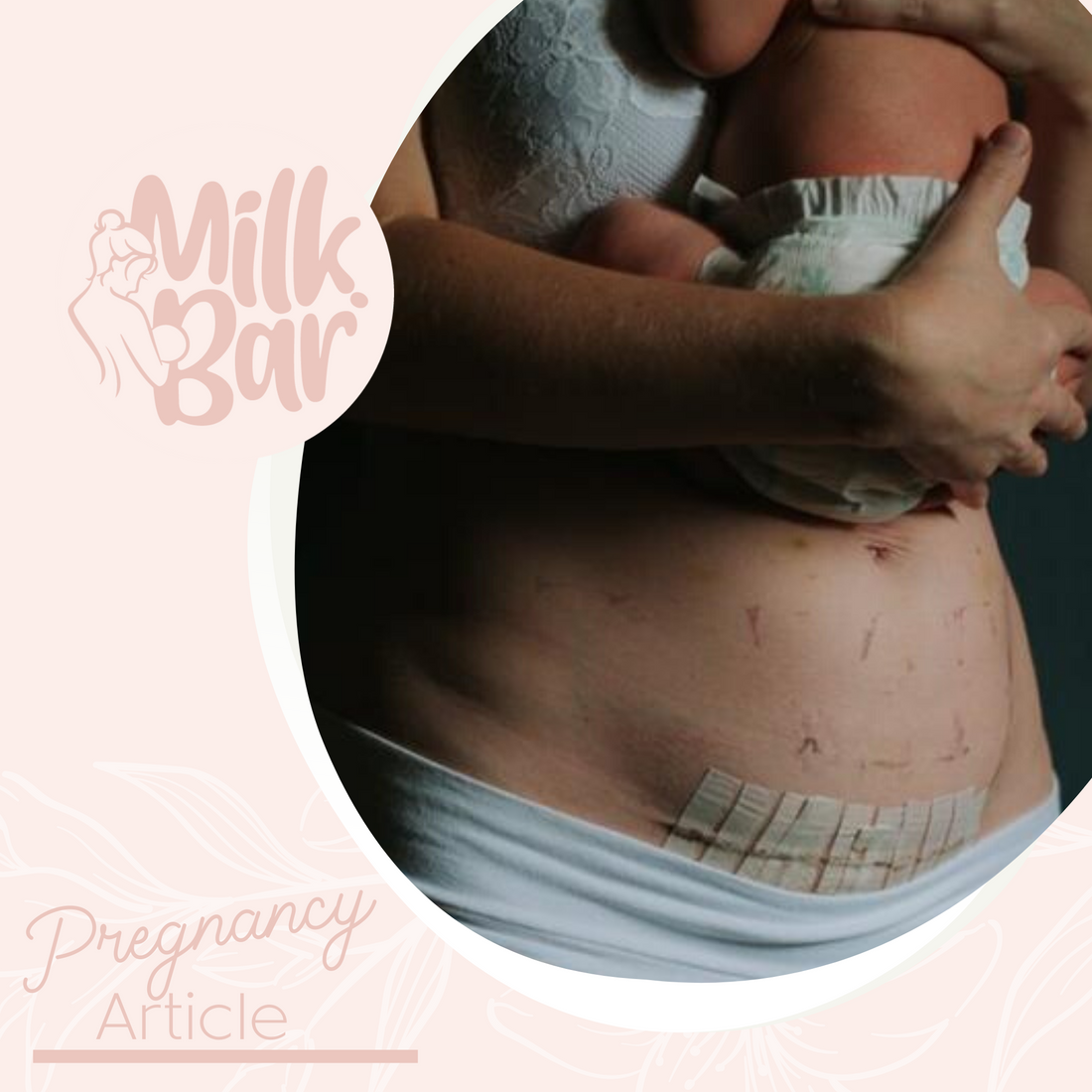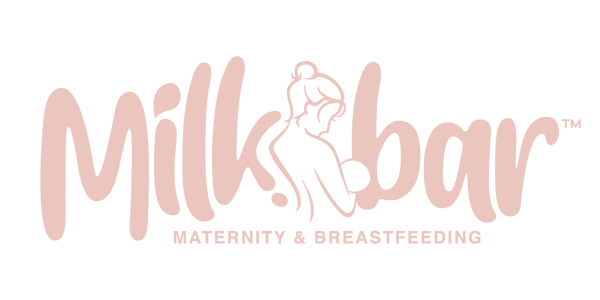
C-sections: What to expect
Share
Many of you may have already read my story of my second child’s birth, so you’ll know that it didn’t quite go to plan. Giving birth by caesarean section wasn’t something I had in mind, after having already given birth naturally to my first son. However, after complications arose quickly and unexpectedly, I ended up having to have an emergency c-section under general anesthetic.
There is absolutely no right or wrong when it comes to birth plans - it’s great to have one, but just important that you are prepared do what’s right for the well-being of you and your baby. So whether your c-section is planned, or whether you’re keen to just get yourself prepared in case your delivery plans change, I’ve put together these tips on what you can expect if you’re having a caesarean section.
1. That spinal injection
If you’re having a C-section, an anesthesiologist will inject a local anesthetic into your spinal fluid. The idea of having a huge needle inserted into your spine can feel a little daunting but don’t worry, you’ll just feel a quick, warm sting and then the numbness will take over. In fact, it could even be a ‘is it in yet?’ moment. The lower half of your body will go numb, and most women will stay numb for around 2-3 hours.
2. A heavy chest
Many women will report feeling like they’re struggling to breathe - this is normal and it’s just the anesthetic talking. However even with this knowledge, it can still be a scary sensation. Some may describe it as pressure, tightness or even like there is an elephant foot pressing down on your chest. The scary bit is that you really feel like you’re not breathing at all, but be assured (and I’m sure your anesthesiologist will reassure you too) that you ARE breathing - and take this as a sign that you are numb enough that you won’t be feeling anything further down!
3. You’ll get the shakes
Teeth-chattering shakes are disconcerting - but not uncommon. When the anesthesia kicks in, you’ll get fever-like shivers that will feel worrisome but are normal. Your medical team are there to keep an eye on you so ask for blankets if you need.
4. You will feel something
Yes, you’ll be numbed, but that doesn’t mean you won’t feel some sensations. You’ll likely feel a bit of pressure (particularly when the incision is made), tugging and pushing as your baby is eased out of your abdomen. Little do you know, there’s actually a whole lot of action going on! Keep a dialogue going with your medical team, they will reassure you that what you’re feeling is all part of the process.

5. Weird gas pains
You might also experience some unexpected gas pains - not the usual kind that are relieved with a little passing of wind. Strangely, you could feel these pains right up in your shoulders. It’s referred pain from a build up of trapped gasses in and around the abdominal and diaphragm area - it will pass eventually but it can be extremely uncomfortable.
6. Post-partum bleeding
Stock up on those maxi pads, because you’re going to need them for 2-6 weeks after the birth of your baby. This one may come as a surprise, after all, you managed to keep your vagina in one piece! You may pass a small number of clots after birth, but the bleeding largely comes from where the placenta was attached to the womb.
7. Constipation
It’ll be hard to poo, and your poo will be hard! You’re going to feel a little blocked up for a while from the painkillers you’ll need to be taking. Stool softeners are your friend! And, pro tip: make sure you’re not alone when nature calls for that first number two, because you could be in there a while and you might need someone around to keep an eye on baby (and shout words of encouragement through the walls!), or, the laxatives could work a little too well and you may need a hand to get to the bathroom in time!
8. On your feet within 10 hours
You need to be up and about within 10 hours after surgery. It’s going to hurt, it’s not going to be fun, but it has to be done. It helps to prevent blood clots, aids blood flow for recovery and will help to ‘get things moving’ down there too. You’ll probably feel like you just want to sleep (after all, you’ve just had pretty major surgery), but it’s important to get up and about.

9. High-waisted is your friend
Don’t get caught out - pack plenty of high waisted underwear and comfortable clothing in your hospital bag. Because of the incision location, you want underwear that doesn’t rub against your new scar, so, bring on the granny panties. Coughing and sneezing are going to be moments of dread, and it might hurt to laugh - but don’t let that stop you, place a pillow or your palms flat and firm against the incision site and try to brace while doing so if you have time. It will take a long time for the tissue to heal so avoid lifting anything heavier than your baby - and no housework, it’s the rules! Your scar may have healed in around 6 weeks, but underneath there is plenty of work that needs to happen for your tissue to recover, which will likely take many months.
10. Tips for breastfeeding
A c-section can sometimes affect breastfeeding initially - but being aware of this can help you more confidently deal with any challenges. A c-section will usually cause a slight delay in the production of breast milk compared to a vaginal birth. Depending on the anesthesia used for your surgery, it may also delay your ability to start breastfeeding until you’re up to it. With an epidural you’ll generally be able to start breastfeeding straight away, but be aware that the pain from the incision can make breastfeeding positioning a little uncomfortable. A side-lying position, football hold, or a cradle hold with the use of a breastfeeding pillow are more comfortable positions. If you and your baby are separated after delivery for any reason, be sure to hand express then use a breast pump every 2-3 hours if you’re going to be apart so you can start to stimulate milk production and express colostrum to give your baby.
11. Guilt or disappointment
Your birth experience may not exactly have gone to plan. Or perhaps you were planning on a c-section all along. Either way, it can be normal to feel guilt, disappointment, shock or fear about missing out on bonding experiences - I know I did, and still do. Please go easy on yourself. You did what was best for a healthy and safe birth for both you and your baby - and at the end of the day, without taking away from what you have been through, that truly is the most important thing.
Don’t forget, a cesarean section is a huge operation. Your body will need plenty of time to rest and heal. Chat to your OB, midwife and physio about managing pain and care and recovery strategies to ensure you’re doing the best for your body after birth.
If you would like to read more about my experience with the birth of my second child via cesarean section - I have written my birth story here.

1 comment
Thanks so much for sharing your journey with us. This is baby no.3 and potentially a VBAC or planned c section. I’m preparing for both so your article has helped with a lot of anxiety I’ve been feeling.